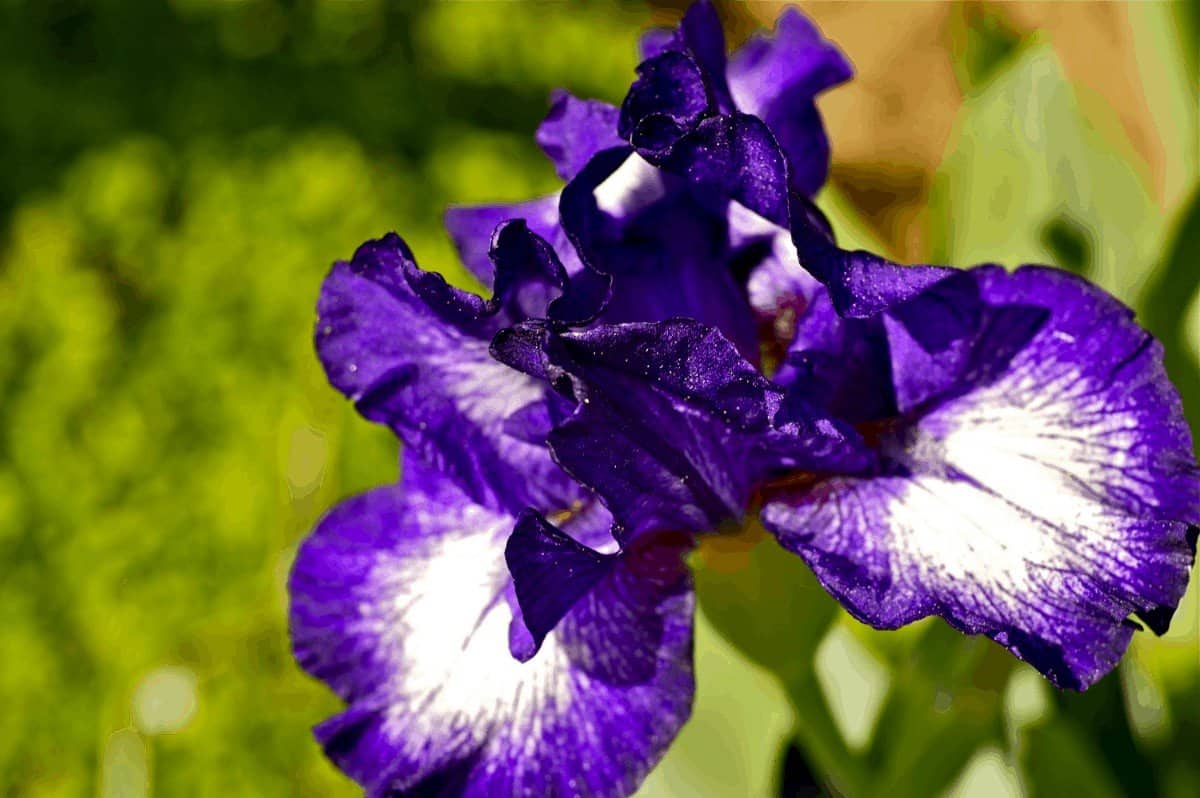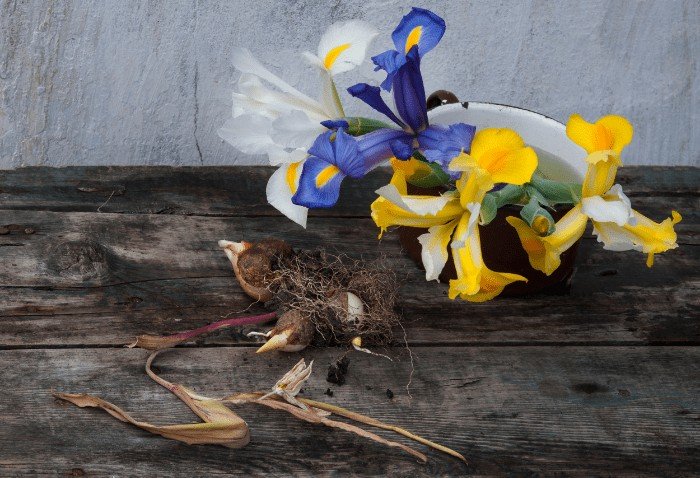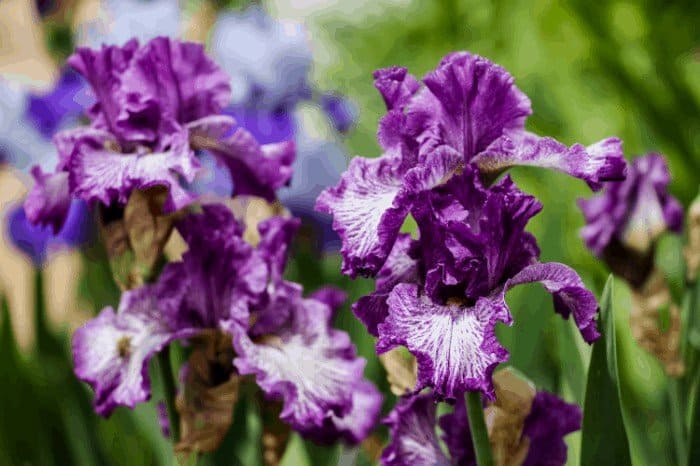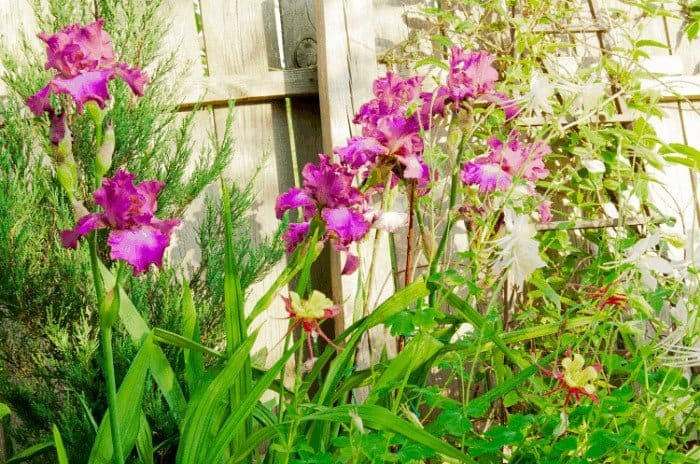Last Updated on December 28, 2021 by
Irises are beautiful plants to behold and make a pleasant addition to your garden. They grow seamlessly and blossom with the years. If your irises are well tended to by you or you have someone else handle it, then there will be no problem at all when it comes to blooming and there won’t be the need for the question on how to get iris to bloom again.
They come in a variety, from bearded to Asian and from classic to designers. Their sword-like leave appearances are durable and would constantly make your garden shine out in style.
There are many reasons why your Iris won’t bloom in the first place which would have frustrated your efforts and dampened the once radiant glory of your garden.
How to get Iris to Bloom Again: Why Iris Won’t Bloom
Some irises grow from rhizomes while some other species grow from bulbs, both are underground reservoirs where growth processes are initiated for the iris to spring up and bloom afterward.
If something is wrong with the rhizomes or bulbs underground, then it will affect the production of fruits upwards. If the rhizomes or bulbs are rotten or not well-formed, healthy stems won’t sprout and that includes leaves.
Soil can also be another issue too, the iris plant needs a well-drained soil that receives ample sunlight so flowers can grow seamlessly. This also implies that if the plant is deficient of sunlight, it won’t bloom or it might lead to stunted growth.
Another cause why the iris won’t bloom can be linked to the depth of planting. If the planting is too deep the iris will not grow flowers.
Some other conditions that are precursors to the failure of your iris in blooming are overcrowding, unfavorable weather, insect infection, and plant diseases.
But there is always a solution and that’s why you are reading this. So let’s get down to the meat of the subject.
Find Autumn Circus Bearded Iris seeds on sale here.
How to get Iris to Bloom Again
Here are some of the ways you can get your iris to bloom again:
Streamline Sunlight Conditions
If the conditions surrounding your irises are shady, your iris won’t bloom. You can remedy such a situation by reducing the shades on your iris. Some species of the plant might need at least six hours of ample sunlight a day to blossom.
Anything you can do to allow for ample sunlight on your iris plant would do. From pruning other trees serving as shades to transplanting the iris to a new location where they will receive much sunlight would do the magic.
Watch out for depths
When the depth of the rhizome or bulb is too deep, the iris will suffer for it. If you notice that your iris plant is not blooming, check the depth of the rhizome, if it is too deep, uproot and replants just beneath the soil.
In some cases like clay soil, a part of the rhizome should be above the ground. Clay soils are very rigid and won’t help the growth of iris, asking for blooming would even be too much of a demand.
Reblooming Iris Watering Appropriately
Irises naturally do not need many efforts from you when it comes to watering, however, they should be watered every week following any successful planting season.
For irises that are rebloomers, you need to keep up with the watering through summer especially when there is less rainfall till they begin to bloom again. If there is drought, then you need to water generously. Water irises in a way that the water would permeate deep into the soil.
How to get Iris to Bloom Again: Get Rid of Faded Blooms
As part of paying attention to your iris, faded blooms are to be removed by cutting the stalks with a pair of scissors or hand clippers close to the base of the plant. Just like trimming flowers allows for better growth, beauty, and glory, the same goes for irises.
Removing faded blooms can help the iris plant conserve energy in their rhizomes which are to be utilized for blooming rather than exhausting them in the making of seeds. Faded blooms can still produce seeds but that will be at the expense of the energy that would have been used for blooming. For rebloomers, it can also lead to luxurious reblooming for them.
Reduce Overcrowding around the Irises
The rhizomes are bound to expand with time and that will lead to some sort of clogging in terms of space around each other. They become too attached to each other and inhibit their successes.
You need to uproot the rhizomes and separate them from each other. After the separation which should be done with a knife, you can replant them as soon as possible. This should be done every three to four years, by then the rhizomes would have merged themselves together again leading to another crowding. They would bloom better after you’ve succeeded in splitting them.
Limit the competition from other plants
Plants can be very greedy at times in terms of mutual resources beneath the soil. If your irises are surrounded by other plants, it means the resources in the soil like nutrients necessary for growth and blooming would be limited.
Get rid of weeds, that’s a thumb rule already and every other plant that you feel might be shortchanging your iris in terms of resources under the soil. Some of the competition might lead to shades that limit sunlight. Your plants would respond to all of these unhealthy conditions by failing to bloom.
You can fertilize them
They are plants and they need some ingredients to boost their growth and in the case here, their blooming. You can fertilize in early spring as soon as they start to grow and fertilize a month later after they would have bloomed brilliantly in summer. Follow descriptions on the application of the fertilizer to the latter and you would have nothing to worry about.
Conclusion
Irises can be brought back to life after they’ve failed to bloom for a season. This can only happen if you’ve checked all of the possible causes that must have led to their deterioration in blooming. Pest and diseases are not to be ruled out, you can consult an expert for professional solutions if this is the problem. Your irises would begin to bloom again if you apply everything you’ve read here.
FAQs
How do I get my iris to rebloom again?
Irises are known to be perennials with multiple flowers. However, if their flowers don't bloom, they may need more time to establish their roots in the ground before they will bloom again.
When irises don't bloom for a long period of time, it is best to dig up the plant and replant them into fresh soil. If you have a large garden that has a lot of irises your may want to trim back the foliage of some of them and make sure that they are getting enough nutrients and light.
What is the best fertilizer for irises?
The best fertilizer for irises is a balanced fertilizer which includes both nitrogen and phosphorus. The first ingredient is essential for healthy, strong plant growth while the second helps to prevent plant diseases.
While commercial fertilizers typically include both ingredients, there are also organic fertilizers that only have one of these ingredients. These are great for people who want to enjoy the benefits of a healthy and organic garden but don't want to fuss with the details of how their food was grown.
One of the most popular types of organic fertilizer is compost which has been rich in nutrients from decaying plants and animal waste.
Should you mulch irises?
Mulching irises is a process by which gardeners break up the soil of a flower bed and mix it with grass clippings, leaves, and other organic matter. This process allows for faster water penetration into the ground, preventing water from pooling in puddles on the surface. Make sure that you don't overdo it and kill them off instead!
How do you keep iris blooming all summer?
Iris can be kept blooming all summer by planting the seeds in the spring, so they will have time to grow and flower over a long period of time. You can also divide your Iris bulbs into four or five sections and put them in different locations. This will ensure that your plants are happy through the summer months and then you can replant them again for next year.
This is just one of many ways to keep iris blooming all summer long!
How do you rehydrate iris bulbs?
Iris bulbs are fragile and can easily die if they are not taken care of properly. If you take good care of your iris bulbs, they will last longer and grow well. Here are some tips on how to rehydrate them:
- Cut the bottom part off.
- Dip the cut parts in water for a few seconds to remove dirt and dust.
- Place them in an airtight container filled with water for around 20 minutes to let excess water drain out.
- Add more fresh water into the container until it is fully submerged.
- Use a plant mister to mist over your iris bulbs every day to help keep them moist and avoid dryness or browning on their leaves.
How many years will irises bloom?
It is not possible to determine exactly how long an iris will bloom. Different species of iris have different lifespans, but most can last between 4-20 years.
In the United Kingdom, the growing season shortens as we move higher in latitude. As a result, many irises will only bloom for up to four years after they are planted at the beginning of the summer.
An iris's life cycle starts with a tiny seed waiting for the right conditions for growth. It will take about three weeks for the seed to germinate, and then it takes about as long again before it blooms. After that, the plant will begin to die back and start growing a new plant from its root system.
Tony Manhart is a passionate gardener who has been tending to gardens for over 20 years. He takes pride in creating beautiful outdoor spaces with plants, trees, and shrubs that can thrive in any environment. He loves to share his knowledge with others and has taught classes on gardening basics and advanced techniques. He is committed to sustainability, using natural and organic methods to create and maintain gardens. He also works with local organizations to create green spaces for communities. When he’s not gardening, Tony enjoys hiking, reading, and spending time with his family.





